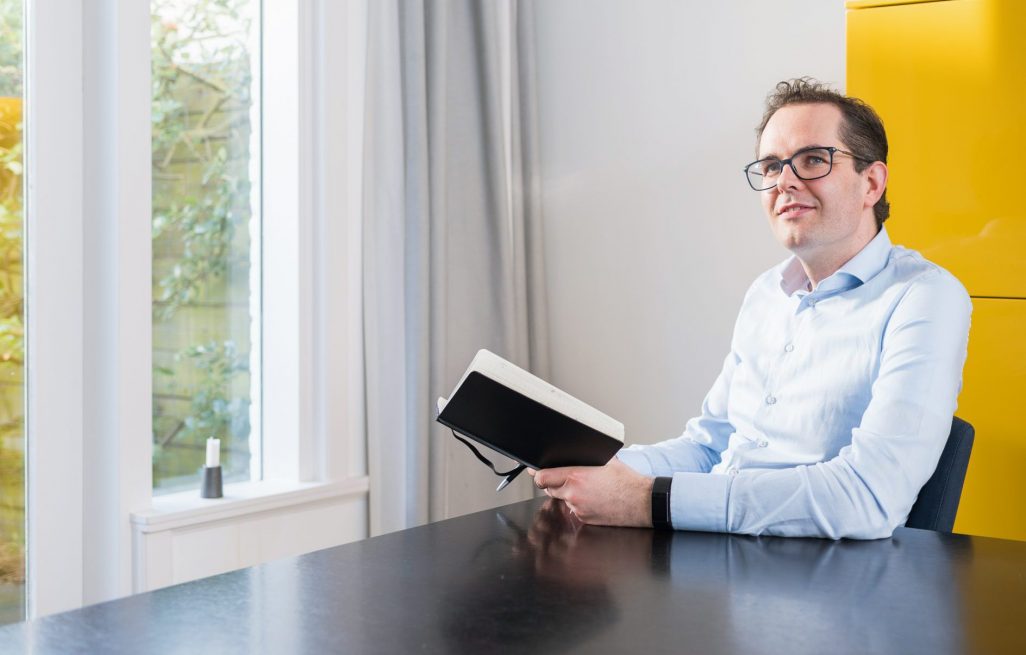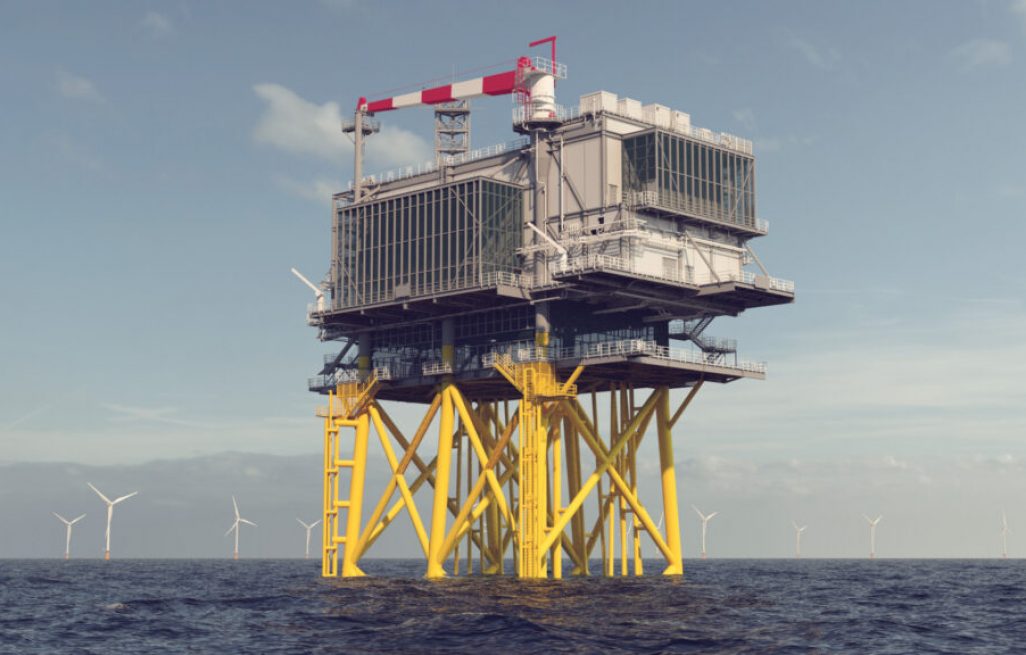
‘Focus on the three Ds: decarbonisation, decentralisation and digitalisation’

Eneco has a leading position in the deployment of renewable sources such as wind and solar energy. At the same time, Eneco is facing rapid change. Customers, politics, subsidy-free assets and technological innovation have made the market for energy and the energy supply more dynamic than ever before. To keep up, Eneco must continuously adapt. How does this work, and what are the key challenges and strategic goals? An interview with Erwin Leeuwis, Director of Strategy at Eneco.
Both develop and enhance our pivotal position.
Erwin Leeuwis
‘The energy market is changing faster than ever. We are witnessing three megatrends, often referred to as the three Ds: decarbonisation, decentralisation and digitalisation. In other words, the reduction of carbon emissions is a key focus for the rapidly increasing number of decentralised energy networks. And digitisation is not only changing how we interact with customers, but it is also further integrating and accelerating energy flows.
The combination of these three trends can significantly accelerate the energy transition. We view this as an opportunity rather than a threat. Of course, there are born digitals that are trying to penetrate this domain with online solutions or parties that are heavily specialised in solar panels or battery solutions, but on the retail side, energy is still very much a national affair. Each country has different laws and regulations when it comes to electricity, gas or heat. This makes it difficult and less appealing for the large, digital international players. But we are not about to throw in the towel. Our customers expect a lot from us: a digital experience they already know well from the digital leaders outside the energy sector, concrete help with sustainability issues, but also a very competitive price. We are therefore investing heavily in our digital customer experience, in the underlying IT systems and in our sustainable services.
A good example is the “Transitioner”, a digital assistant that offers consumers tailor-made advice on how to move forward with sustainability. But digital alone is not enough; market parties must also have a large customer base, not to mention the availability and knowledge of hundreds of technicians to install solar panels or maintain boilers and heat pumps. You also need a reliable organisation with acute political antennae, a solid reputation or a good NGO ranking. All these things play a role in the energy domain. Our investments in state-of-the-art IT systems and a new shareholder focused on the long term have given us great confidence in the future,’ says Erwin Leeuwis.
Eneco’s investment plan:
EUR 600 millionper year
Converging of the three Ds
‘That is the great thing about Eneco,’ says Erwin. ‘The three Ds really do converge here. We are like a director in the energy transition: depending on the weather conditions, our sources sometimes generate energy and sometimes not, and we have to content with fluctuating demand for energy. It is quite an art to keep a balance between supply and demand in complex decentralised energy structures. Eneco is an expert at this: we can remotely monitor the overall energy mix by combining IT, wind energy, solar farms, solar power on roofs, cables and infrastructure, batteries and more. A genuine hub in the energy network.’
The Netherlands is at the vanguard in Europe.
Erwin Leeuwis
Optimising the heat networks
‘We are investing heavily in setting up high-tech control rooms or modern operational centres,’ Erwin says. ‘This enables us to monitor the energy flows better, especially electricity and heat, and optimise them remotely, 24 hours a day, 7 days a week. IT and data management are particularly important in that respect. With integrated energy flows, we will eventually be able to remotely control each link. That is why we are focusing on controllable power, which we can manage remotely. The 13,000 water boilers in consumers’ homes, which we can switch on and off remotely, are an early example of this. And we are working on smart heat delivery sets. These allow us to optimise the feed-in temperature of the heat that we supply to customers. Our aim is to eventually optimise the entire heat network to reduce heat loss and lower energy costs. To further develop this effort, we are also investing in 135,000 smart heat meters, large-scale electrode boilers (e-boilers) for the commercial market, and sustainable heat sources such as aquathermy. Energy data and IT are solutions for achieving connectivity, which is a strategic focus.’
Doubling of megawatts generated
from sustainable assets from
1,300 MW to 2,600 MWPillars of growth
‘Our strategy has not undergone a revolution but an evolution,’ says Erwin. ‘We are steadily growing into the next phase. Integration and connectivity are important pillars for surprising our customers, both business customers and consumers, with innovative services. Far-reaching integration makes it possible to both develop and enhance our pivotal position in the value chain. This will make us more appealing to customers. We have also developed new KPIs for this purpose, which drive the way we operate. By offering attractive services, we can also further expand our customer base. We also want to accelerate the growth of our sustainable assets, i.e. more wind and solar farms.’
We want to secure a million new customer contracts within five years.
Erwin Leeuwis
Ambitious
‘We want to secure a million new customer contracts within five years,’ says Erwin. ‘This may sound ambitious because, right now, we have over five million international customers and competition is fierce. It is a considerable challenge. Eneco wants to double the number of megawatts it generates from its own assets, in other words from sustainable means of production such as wind and solar energy. We have already reached 1,300 MW, so we need to increase this to 2,600 MW by 2025. This means putting an increasing number of new wind and solar farms into production. Our recent achievements in this area show that we are well on track. But here, too, we have our work cut out for us. There are fewer subsidies available, so we have to further reduce construction and development costs and increase revenue. The latter can also be achieved by further integrating energy flows. This includes hydrogen, and we are already participating in the first pilot projects. In time, hydrogen turbines will also appear within our landscape, which will make it easier for us to disconnect residential areas from gas. The first experiment is Stad aan het Haringvliet on the delta island Goeree Overflakkee. We are also aiming to substantially grow our eMobility subsidiary with a tenfold increase in the number of charging stations between now and 2025. It is also worth noting that the installation and maintenance of charging stations and the provision of charging services is a revenue model in itself. But, in time, there will also be value in smart charging and ultimately also the “discharging” of electric cars.’
smart, digital boilers
The energy transition at its best
‘Innovation is an important driver towards reaching our strategic targets,’ Erwin says. ‘The close collaboration with our new shareholder Mitsubishi really provides added value. Take the tender for the Hollandse Kust Noord wind farm, for example. This wind farm will provide more than 750 MW of power. With its arrival, by 2024 offshore wind energy will supply approximately 20% of the Netherlands’ energy needs. The fact that we were able to acquire this wind farm is partly due to an ambitious innovation plan that focuses on the optimal use of the energy capacity through the submarine power cable. We squeeze, so to speak, as much power as we can through the submarine cable, for example by using a special wind turbine that has a flywheel function and by installing innovative floating solar panels that we developed with TNO. We are also working on far-reaching energy integration with public infrastructure. This is the energy transition at its best, and a good example of the higher added value we want to achieve strategically.’


Liberalising the European energy market
The plans of Frans Timmermans, Vice-President of the European Commission, for a Green Deal in Europe will stand Eneco in good stead. ‘As a “gas nation”, the Netherlands has a lot of ground to make up in Europe when it comes to decarbonisation,’ Erwin says, ‘but in other respects, we are at the vanguard. That gives us a head start over other European countries in our geographical scope. Scale is something that can help us move forward in that respect. We are purposely not doing this on our own; we are seeking – in addition to working closely with Mitsubishi and Chubu – partnerships with leading parties. For example, we work exclusively with a Norwegian company for industrial e-boilers. But we also develop financial partnerships. These enable us to create a multiplier in addition to our investment plan of around EUR 600 million per year. The Hollandse Kust Noord wind farm alone will cost almost one billion euros, so it makes sense to work with solid and smart financial parties. Eneco and Mitsubishi have identified markets that we can explore together. We will therefore be playing a key role in the development of wind farms in Japan, for example. We are also applying innovative heat technology in the development of district heating networks in Europe with Chubu. There is a huge potential that we can tap into as part of our strategy!
smart heat meters
Strategy becomes reality
When Erwin Leeuwis is asked what he is most proud of looking back on Eneco’s strategic journey, he says: ‘What is most satisfying is realising that past strategic choices are the reality of the present and future: e-boilers, solar carports, the “Transitioner”, floating solar panels. And especially the fact that we are connecting all the links in the energy chain, which we have made possible by making smart IT choices. The energy landscape is changing rapidly and Eneco is leading the way. I have a great job, because who would deny the opportunity to have a say in the future of energy?’